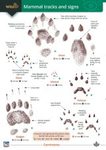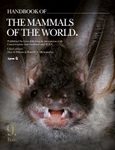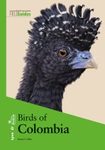By
Gehan de Silva Wijeyeratne
7 Dec 2020
Written for Paperback
This is the third volume in the Illustrated Checklist series that is a spin-off from the monumental
Handbook of the Mammals of the World (HMW). Although not intended to be a field guide, it follows the standard format of field guides with an illustration accompanied by brief text and a distribution map. The text is identification focussed and also includes habitat. The distribution map being so close to the illustration is especially powerful as it allows the reader to visually process information and without reading a word of text, know where a mammal can be found.
When I first travelled in China as a backpacker a few decades ago even birders were yet to discover China. The situation has changed and now there are local Chinese birders who run wildlife tours. This book may help to change perceptions on China’s potential for mammal watching tours as a quick thumb through shows that there are many mammals in addition to the well-known Panda that can serve as a focal point for mammal tours. The distribution maps indicate a mammal’s range in China and also extend to the borders where the range spills across political boundaries to neighbouring countries such as Bangladesh, Myanmar and Vietnam. As a result it becomes readily apparent that many mammals more strongly associated with South and South East Asia are in the country list for China. A surprise to many will be the Asian Elephant. But there are many other interesting mammals such as the Northern Treeshrew, two species of slow lorises and a staggering 23 species of primates which can be seen in China. This includes macaques, snub-nosed monkeys, langurs and gibbons. Diurnal, small mammals which wildlife travellers are likely to see include squirrels. There are 48 species of squirrels which include marmots in the family Scuiridae. Only just over half will be diurnal as the flying squirrels are mainly nocturnal. But the oriental component in China’s mammal fauna does mean there is a reasonable haul of mammals that participants on birding tours for example could be looking out for.
China also has an exciting mix of Carnivorans. The 12 species of cats warrant special mention. Namely, Indochinese Clouded Leopard, Snow Leopard, Tiger, Leopard, Marbled Cat, Asian Golden Cat, Eurasian Lynx, Pallas’s Cat, Leopard Cat, Jungle Cat, Chinese Mountain Cat and Wild Cat. I was pleasantly surprised to see that the Grey Wolf
Canis lupus occupies a wide range across China. I had never imagined China as a place to see the Wolf. Admittedly as with many other countries, the significant majority of the mammalian fauna will be small, secretive mammals, many of whom will also be nocturnal and with small ranges and quite cryptic in the field. Nevertheless, this book is a compact and powerful reminder that the fourth largest country in the world holds 663 species of mammals in 57 families.
The book has updated the taxonomy where necessary from the HMW and will be a useful baseline reference to anyone with an interest that warrants keeping abreast of mammal taxonomy. Species are also arranged in a sequence that reflects evolutionary relationships. For example, the whales and dolphin families follow the bats and are before camels, pigs, chevrotains, musk deer and deer. This reflects that the ancestor of whales and dolphins was a four-legged ungulate. The different mammal families are marked with a shaded text box, thus making clear that chevrotains, musk deer and deer are in different families despite striking similarities. I like it when books draw attention to different families as I believe this helps people to develop a sense of the mammalian diversity they are being exposed to when they travel internationally or locally across their home region.
We all know that China is a populous country. The introduction points out that an astonishing 95% of the population is in 45% of the country, the area known as Eastern Monsoon China. Unfortunately, this is the part of China with the country’s rainforests and richest biodiversity. Nevertheless 55% of this vast country is thinly populated. Despite bad press over several decades, there are signs that China is increasingly aware of its environmental responsibilities. A few years ago, the country announced it will protect its remaining coastal wetlands which are critical for many shorebirds on the East Asian flyway. On my last visit to China I delivered a lecture which had been arranged by the Sri Lankan consulate in Guangzhou. It was attended by nearly a hundred researchers, conservationists, academics, tour operators and press. There is clearly a ground swell of interest in wildlife by the Chinese both in what they have locally and overseas. The best outcome of this book would be if a Chinese state agency or in-country publishers approaches the Lynx Edicions to co-publish a Chinese version. Books like this are a spur for anyone to see quickly and easily what a treasure trove of mammals China has and that China needs to act to save them.























![How to Find and Identify Mammals [Revised Edition]](http://mediacdn.nhbs.com/jackets/jackets_resizer_medium/21/210208.jpg?height=150&width=106)
















